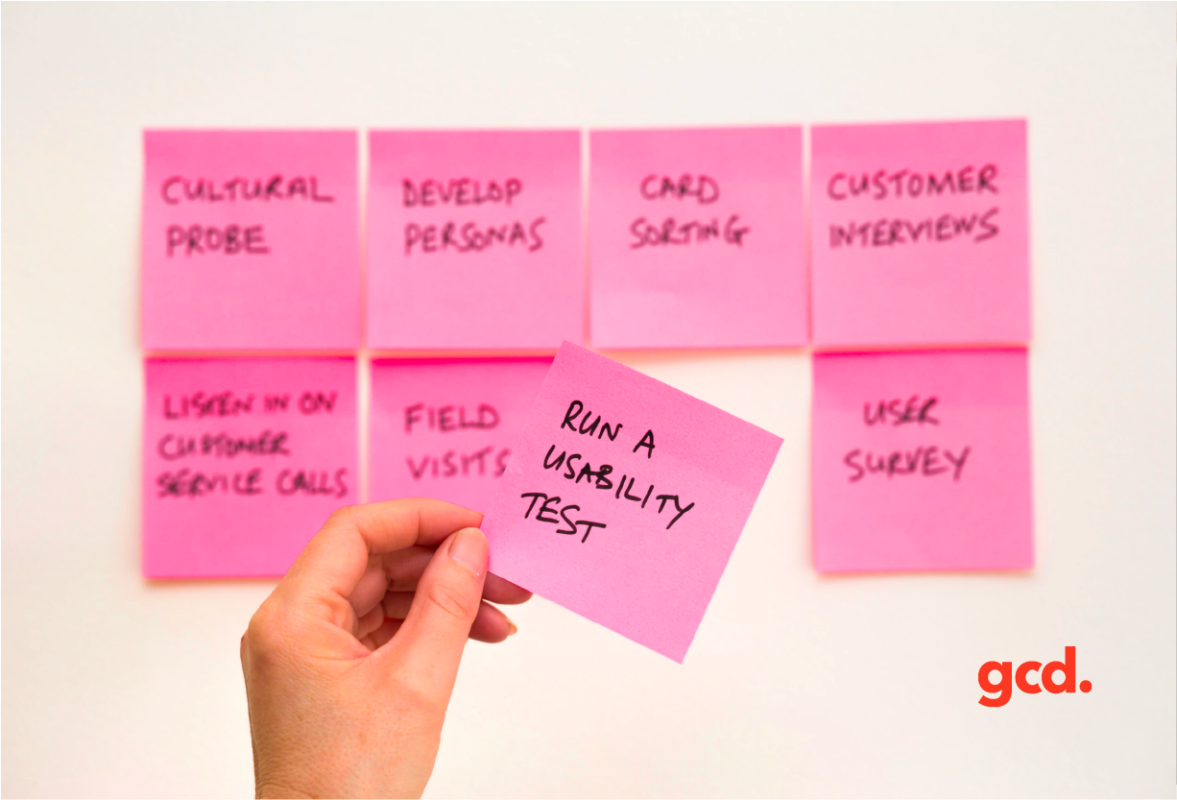User Experience (UX) surrounds all aspects of the end-users interaction with the client, its services and its products. For businesses starting a new project, the focus of user experience is to find the balance between the business goals and the user needs.
It’s also about the return on investment on strategies and tools we implement along the way. User experience designers constantly test new ideas and never feel that these ideas are hard and fast rules. However we are always in the mindset of the iterative design process, seeking new and more efficient ways than those suggested in the beginning.
UX designers are never 100% happy all the time. Design led thinking isn’t set in stone, our solutions aren’t always right the first time, instead it’s a learning process that we and the client work through, resulting in a user experience that works for both the business and the user. That’s why UX design is so essential.
There are 6 ways that user experience design can have a measurable impact on a business:
- Increased Sales
- Increased Engagement
- Increased Adoption
- Increased User Retention
- Time Saving
- Increased Brand Loyalty
In order to achieve all of this, we need to understand the business strategy which takes into consideration what the business goals are and what the KPIs of the product are. The best way to achieve this clarity is for a UX designer to run facilitation workshops to help the business understand how their strategy relates to user experience and how to go about achieving those goals.
User Experience is Essential to Growth
A study published by Forrester Research stated that while a great user interface (UI) could increase the conversion rate of a website by 200%, a great user experience could increase the same by almost 400%. When customers come to your site, you only have a few seconds to influence them; investing in UX optimisation is necessary to quickly gain trust, brand recognition and ensure user retention.
User Experience Saves Time
A behavioural psychologist, Dr Susan Weinschenk, found that with the benefit of user experience, you can avoid unnecessary rework for programmers and developers by 50%, e.g. building a feature that nobody uses or needs. If you have a UX designer who takes the time to understand what the business is trying to achieve, the features being designed and who you are designing for, you can avoid this unnecessary rework and save yourself time, effort and most importantly, money.
These key questions should be asked at the very beginning, by doing so software developers can really focus on creating new features and implementing new systems that will improve what’s already been done rather than reworking older features.
Not only does this save time, but time often means budget. With more budget to play around with which could reassign this to increased usability testing or more detailed prototyping. It depends on how you want to reallocate the time but it’s important to see the real business value of user experience design.
Why Implement a User Experience Strategy?
It’s vital to apply a user experience strategy at an early stage. When you launch a product on release day you’re going to see a few minor bugs appear that only occur when it goes live. Sounds scary but don’t worry it’s completely normal.
However, those bugs can increase if you didn’t implement UX design at the very beginning. When you have a solid amount of research done before touching the design, e.g. stakeholder interviews, the UX designer will understand the customer journey, who they’re designing for, how they’re designing, what systems they are designing for, what platforms they’re designing on. At this point they will have solid alignment of understanding from everyone involved. A method of reducing bugs at this point is by performing usability tests. Usability testing evaluates how easy it is to use a website or software. It’s important to put your software in front of users as early as possible. If the user can achieve their goal during the test, the process was a success. If there are usability issues here, it’s better to fix them before going fully live otherwise you are compromising engagement and brand loyalty.
How Much Budget Should be Allocated to UX Design?
An allocation of 10-20% of your project’s total budget to user experience design usually yields the best return on investment. That said, your UX budget spending won’t be the same as the next company or even project. You may spend more on research whereas on another project, you may spend more on prototyping. It will all depend on your specific project, business goals and objectives.
How Does Poor UX Affect a Business?
At the end of the day money talks. You want to explain what UX does in a business? It saves the business money. Ignoring this can be costly. Charlie Claxton, Head of UX at Amazon said, “Every dollar invested in UX yields a return between $2 and $100.”
The earlier the UX design is invested in, the cheaper it is to resolve the problems. For every £1 spent resolving a problem during design, £10 would be spent on the same problem during development. This would multiply to £100 or more if the problem has to be solved after the product’s release.
When you look at design led companies you can see they are in the billions in terms of revenue. Airbnb is valued at over $90 billion. They are using principles of design thinking and attributed that way of thinking to increase their sales for their business. Apple’s UX also has a direct impact on their brand credibility. By providing a frictionless user experience, organisations can positively impact customer satisfaction and increase their trust in the system.
Customer experience is now starting to overtake price and product as the key price differentiator. Where companies were once competing on price, soon companies will compete on who will have the best customer experience and who consistently work on it. Those who work on it the most are UX designers.
A lot of times, it seems like design is a removable piece of the project. If budget is tight, design is always the first thing to be downplayed. What’s important to know is that one way or another, the software has to be ‘designed’ by somebody. Should that person not be the professional designer? Money spent early means money saved later. Invest in good UX design now and save yourself the hassle of rework down the line.


